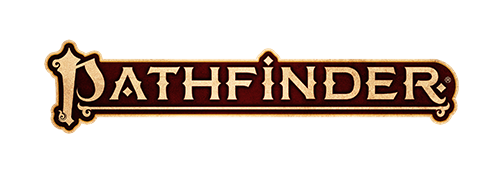Half-Elves
Elves have long drawn the covetous gazes of other races. Their generous life spans, magical affinity, and inherent grace each contribute to the admiration or bitter envy of their neighbors. Of all their traits, however, none so entrance their human associates as their beauty. Since the two races first came into contact with each other, the humans have held up elves as models of physical perfection, seeing in the fair folk idealized versions of themselves. For their part, many elves find humans attractive despite their comparatively barbaric ways, drawn to the passion and impetuosity with which members of the younger race play out their brief lives. Sometimes this mutual infatuation leads to romantic relationships. Though usually short-lived, even by human standards, these trysts commonly lead to the birth of half-elves, a race descended of two cultures yet inheritor of neither. Halfelves can breed with one another, but even these “pureblood” half-elves tend to be viewed as bastards by humans and elves alike.
Half-elves are extremely common in Thassia, which the elven nation of Nysaido occupied during the Riss Empire’s expansion. During this occupation, the Thassian people adopted many of the traditions and practices of the elves, and as the cultures merged so did the people.
Half-Goblins
Half-goblin characters are the unlikely offspring of goblins and humans (and sometimes elves). The wide social and cultural gap between a goblin and a member of the larger folk of Riadus is sometimes overcome through genuine affection, though such romances rarely last long. Most half-goblins are actually several generations removed from a half-goblin who had a full blood goblin and full blood human for parents. Though such “half” goblins are actually only 1/3 or 1/4 or even 1/8 goblin (or human), they tend to carry the same physical traits and are treated as half-goblins by both goblins and humans.
You can find half-goblins everywhere you find goblins and humans living near one another. Most half-goblins live among the goblin population, fearing persecution. Those with a more human than goblin appearance may find more acceptance among humans.
Half-Orcs
Half-orcs are monstrosities, their tragic births the result of perversion and violence — or at least, that’s how other races see them. It’s true that half-orcs are rarely the result of loving unions, and as such are usually forced to grow up hard and fast, constantly fighting for protection or to make names for themselves. Feared, distrusted, and spat upon, half-orcs still consistently manage to surprise their detractors with great deeds and unexpected wisdom — though sometimes it’s easier just to crack a few skulls.
The orcs of central Lethler frequently raid their human neighbors, often taking slaves and leaving behind unwanted pregnancies. Half-orc children born among the Norling people along the coasts are frequently shunned or even driven from their lands due to extreme prejudice. The Naluk tribesmen of the far north, however, are much more accepting, believing an individual’s nature is a result of the culture that raises them.
Half-orcs can be found throughout Reylan. Though many orcs remain brutal and savage, a great number have successfully integrated into human society in places like Rothnn and Ardmyre. Though orc-human unions and their children remain rare in such places, the sight of a half-orc is familiar enough it rarely causes alarm or invokes animosity.
Hobgoblins
Hobgoblins are the result of interbreeding between goblins and orcs. While technically a “half ancestry” hobgoblins have grown as a singular people in Geilir and function as their own unique ancestry.
Other Ancestries
Dwarves
Dwarves were originally celestial beings, and thus never intended to interbreed with mortal humanoids. Though now mortal themselves, dwarves rarely find themselves attracted to other ancestries, and such unions rarely result in children. When a half-dwarf child is born, they almost always result in what appears as a full-blooded dwarf. Some physical traits of the other ancestry may show through, such as skintone or hair color, but otherwise the child is for all intents and purposes a dwarf.
Rarely, the child of a dwarf and another ancestry results in a nephilim. Even though both parents are mortal, the child may inherit some of the celestial nature of what the dwarven people once were. Such a child may appear as a member of either parent’s ancestry, but their otherworldly lineage is undeniable.
Kitsune, Vylani and Wulfen
Many of the so-called “primal” ancestries, particularly those that developed by the mixing of fey and animals, are not capable of interbreeding with other ancestries. Romantic relationships are of course possible though rare, but the chance of a child is impossible.
The exception are kitsune, who remain as much fey as humanoid in nature. This allows them to have children with other humanoids as well as each other. However, all such children are kitsune, rather than a half-ancestry, and even kitsune cannot have children with other primal ancestries like vylani or wulfen.

